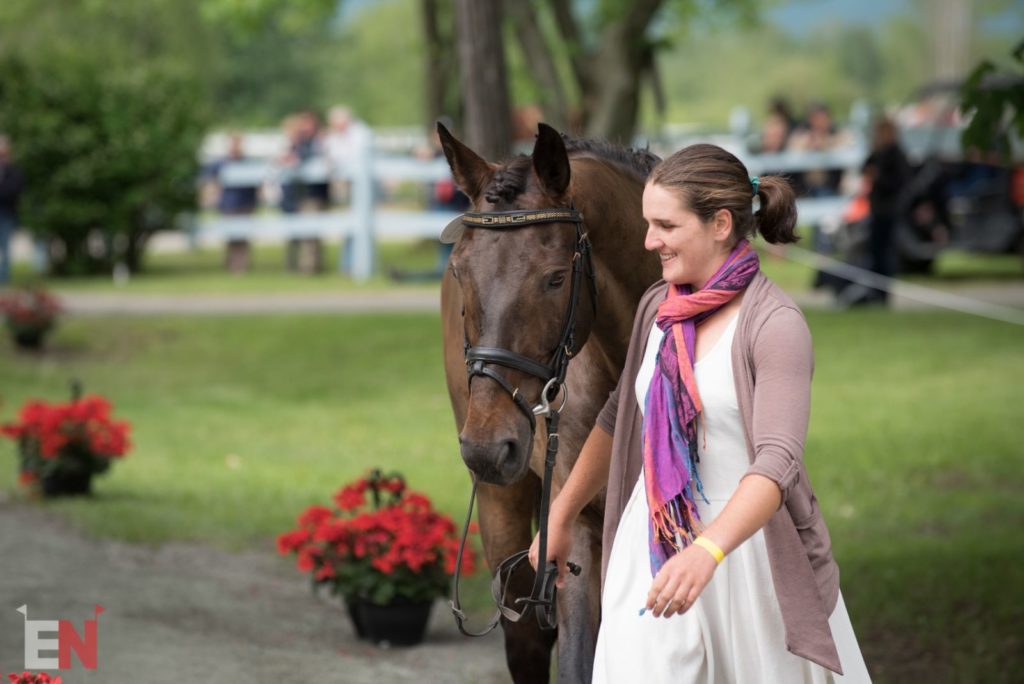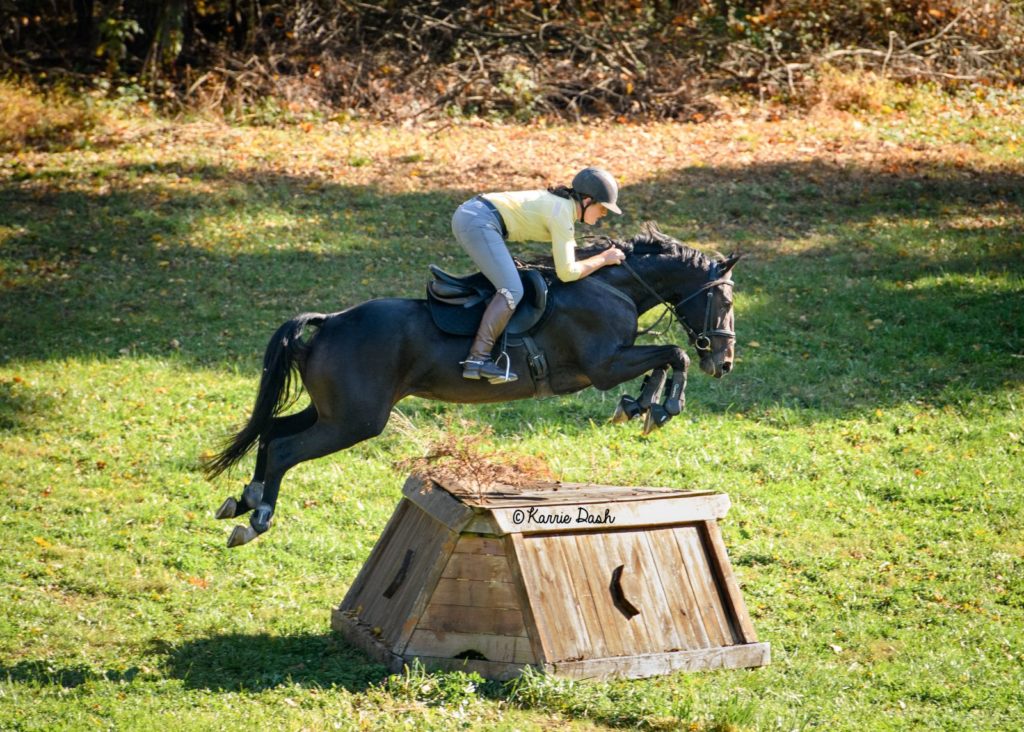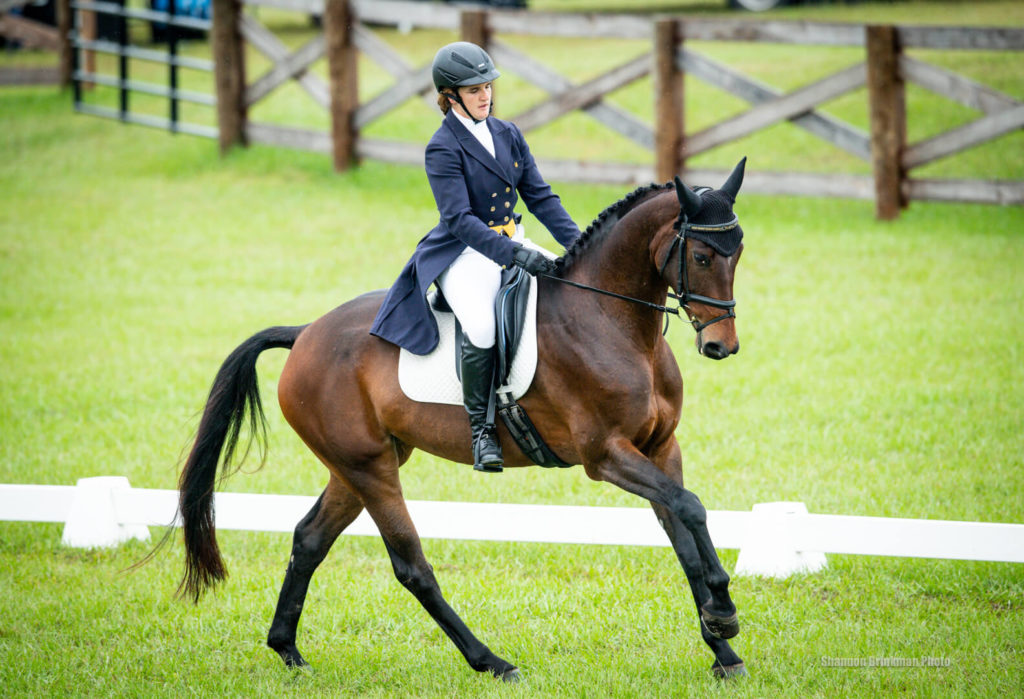Jumper Nation writer Ema Klugman is also a four-star eventer! Ema won the Training Three-Day at Waredaca last weekend with RF Redfern, a 7-year-old Westphalian mare owned by Jeni Klugman. This is a pair to watch for the future — Waredaca marks their fifth Training level win in a row. Ema explains how the “long format” competition can be beneficial for the education of horses and riders. This post originally appeared on our sister site, Eventing Nation.
In our modern world, in many ways we are time-poor: rushing around to fit in work, family obligations, and if we are lucky, some fun like riding horses. We are busy. There is rarely time in the day to finish it all, and we are always searching for ways to make things more efficient so we can get more done in less time (drive-throughs, Siri on our phones, and next-day Amazon shipping are some examples).
 Ema Klugman and Bendigo. Photo by Leslie Threlkeld.
Ema Klugman and Bendigo. Photo by Leslie Threlkeld.
This mindset has also come to our horse world. Many professionals spend show days rushing from one horse to the next. The cross-country phase of our three-day events became truncated as a result of the switch to the short format over a decade ago. What used to be almost an hour of roads and tracks, steeplechase, and cross country is now under 10 minutes of just cross country. There were many reasons for this change to a shorter format, but those are not the focus of this article.
The long format event (now called the Classic Three-Day by those few venues which still offer it) gives you time with your horse in a way that many people do not experience these days. The event itself has you trotting and cantering through forests and around fields, but importantly, the lead-up to the event involves a lot of preparation, hacking, and fitness work which requires you to spend ample time with your horse. Preparing for the event gives you an opportunity to learn more about your horse—what is he like as he ramps up his fitness? Is he naturally easy to get in shape or is it hard work for him? With the goal of a big event in mind, you will get familiar with feeling his legs daily and taking note of any abnormalities. You will follow a schedule and learn the importance of the lead-up events.
 Ema Klugman. Photo by Karrie Dash.
Ema Klugman. Photo by Karrie Dash.
At the Waredaca Classic Three-Day last week, in which I was very fortunate to compete with a young horse, there were only a handful of professionals across nearly 50 competitors. There was only one junior rider in the Training division. This is a shame. Professionals should utilize the Classic Three-Day to teach their young horses to deal with the heightened requirements of cross-country day. The Training Three-Day basically felt like a mini FEI event. My mare had to learn how to trot up, how to show on consecutive days, and how to show jump on the final day after quite a big test of roads and tracks and cross country. This was hugely beneficial for her education. When she goes to FEI events next year, it should feel familiar to her.
I also think it made my horse braver. After doing about 40 minutes of trotting and over 2 minutes of galloping steeplechase jumps, she was really in front of my leg and taking me easily to the fences once I started phase “D.” She finished up more confident than she has ever been. Professionals probably have several counterarguments that they will use: the event isn’t prestigious enough, it’s not recognized by the FEI, and it might make their young horses lame because of the demands of cross-country day. All of these are true. But if more of us show up to these things, there will be better competition. If there’s better competition, there will be more sponsors. It might never be FEI sanctioned, but the USEA can offer other important incentives and awards. And finally, if your young horse cannot do a Training Level three-day event and stay sound, it probably won’t last very long at the upper levels.
 Ema Klugman on Bronte Beach contesting a CCI2*-L. Photo by Shannon Brinkman.
Ema Klugman on Bronte Beach contesting a CCI2*-L. Photo by Shannon Brinkman.
I mentioned the lack of young riders in the Training division last week (there were several in the Novice division). Just as the Classic three-day educates horses, so too does it educate riders. I don’t know why more young riders don’t do a classic three-day, if they have the opportunity, before they start doing FEI events. The feeling and set-up are very similar. Plus, once you get to the FEI level, cross country day will feel short and easy compared to having to complete A, B, C, and D! At the Classic three-day last week, the whole event was designed to set you up for success. Sharon White was there from the moment it began, teaching every rider about the various phases and making sure we were on track to be successful. It is a competition, but it’s also a week of learning. The sense of community among riders is palpable, as everyone is on this learning curve.
Another reason to consider entering a Classic Three-Day is that it connects you to the history of our sport. In a world where we are rushing from one thing to the next, it was amazing to experience the sense of calm on roads and tracks, where it was just me with my horse trotting through the forest, competing in a great sport that has given people joy for over a century. It would be wonderful for more people to take advantage of the Classic Three-Day Events to get back to our sport’s roots and spend quality time with their horses.
Learn more about the USEA Classic Series here.
